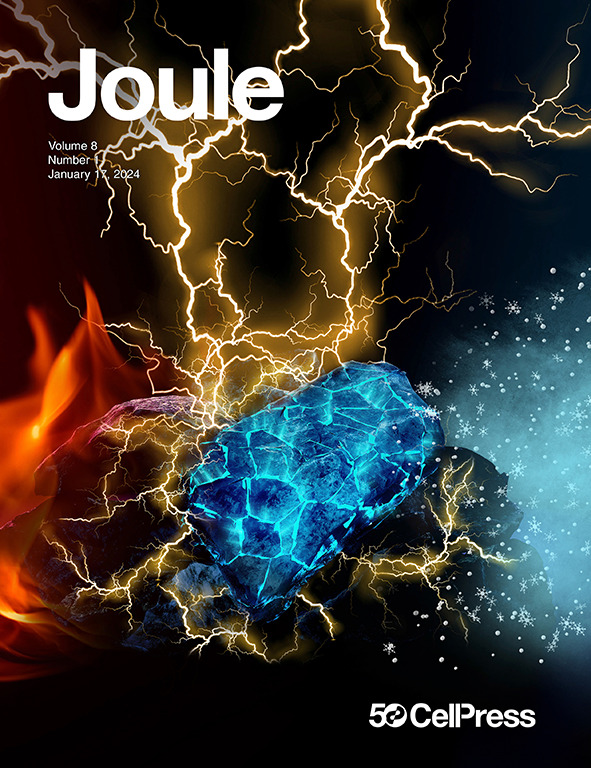Enhancing electron transport for efficiency -recorded HTL-free inverted perovskite solar cells by molecular complementary passivation
IF 35.4
1区 材料科学
Q1 CHEMISTRY, PHYSICAL
引用次数: 0
Abstract
Inverted perovskite solar cells without pre-depositing a layer of hole-transport materials (HTL-free PSCs) still suffer from the non-irradiative recombination at the perovskite/electron-transport layer (ETL) interface. In this work, we report a molecular complementary passivation (MCP) strategy by employing propylphosphonic acid 3-ammonium bromide (PPAABr) to cooperate with phenethylammonium bromide (PEABr) to mutually passivate surface defects of I and formamidinium (FA) vacancies by multi-coordination. This passivation led to an obvious decrease in interfacial defect-state density and greatly improved exciton and carrier lifetime for the perovskite film. Moreover, MCP surface treatment pushes the perovskite surface Fermi level closer to that of ETL, thereby enhancing interfacial electron extraction. As a result, MCP-based HTL-free PSC achieved a record efficiency of 26.40% (25.92% certified). The encapsulated device retains 94.8% of its initial efficiency after 1,000 h of light soaking. The generality of the MCP strategy also generated a competitive efficiency of 23.66% for 1.68 eV wide-band-gap PSCs.


利用分子互补钝化技术提高无htl倒置钙钛矿太阳能电池的电子传递效率
未预先沉积空穴输运材料层(无html -free PSCs)的倒置钙钛矿太阳能电池在钙钛矿/电子输运层(ETL)界面处仍存在非辐照复合。在这项工作中,我们报道了一种分子互补钝化(MCP)策略,利用丙基膦酸3-溴化铵(PPAABr)与苯乙基溴化铵(PEABr)通过多配位相互钝化I和甲脒(FA)空位的表面缺陷。钝化后,钙钛矿膜的界面缺陷态密度明显降低,激子和载流子寿命明显提高。此外,MCP表面处理使钙钛矿表面费米能级更接近于ETL,从而增强了界面电子提取。结果,基于mcp的无html PSC实现了26.40%的创纪录效率(认证为25.92%)。光浸泡1,000 h后,封装装置仍保持其初始效率的94.8%。MCP策略的通用性也为1.68 eV宽带隙psc带来了23.66%的竞争效率。
本文章由计算机程序翻译,如有差异,请以英文原文为准。
求助全文
约1分钟内获得全文
求助全文
来源期刊

Joule
Energy-General Energy
CiteScore
53.10
自引率
2.00%
发文量
198
期刊介绍:
Joule is a sister journal to Cell that focuses on research, analysis, and ideas related to sustainable energy. It aims to address the global challenge of the need for more sustainable energy solutions. Joule is a forward-looking journal that bridges disciplines and scales of energy research. It connects researchers and analysts working on scientific, technical, economic, policy, and social challenges related to sustainable energy. The journal covers a wide range of energy research, from fundamental laboratory studies on energy conversion and storage to global-level analysis. Joule aims to highlight and amplify the implications, challenges, and opportunities of novel energy research for different groups in the field.
 求助内容:
求助内容: 应助结果提醒方式:
应助结果提醒方式:


